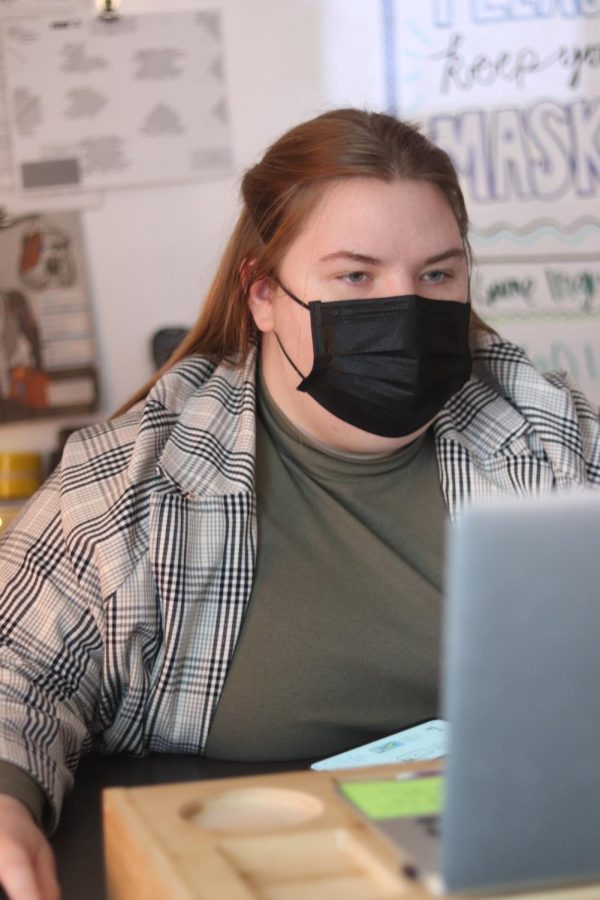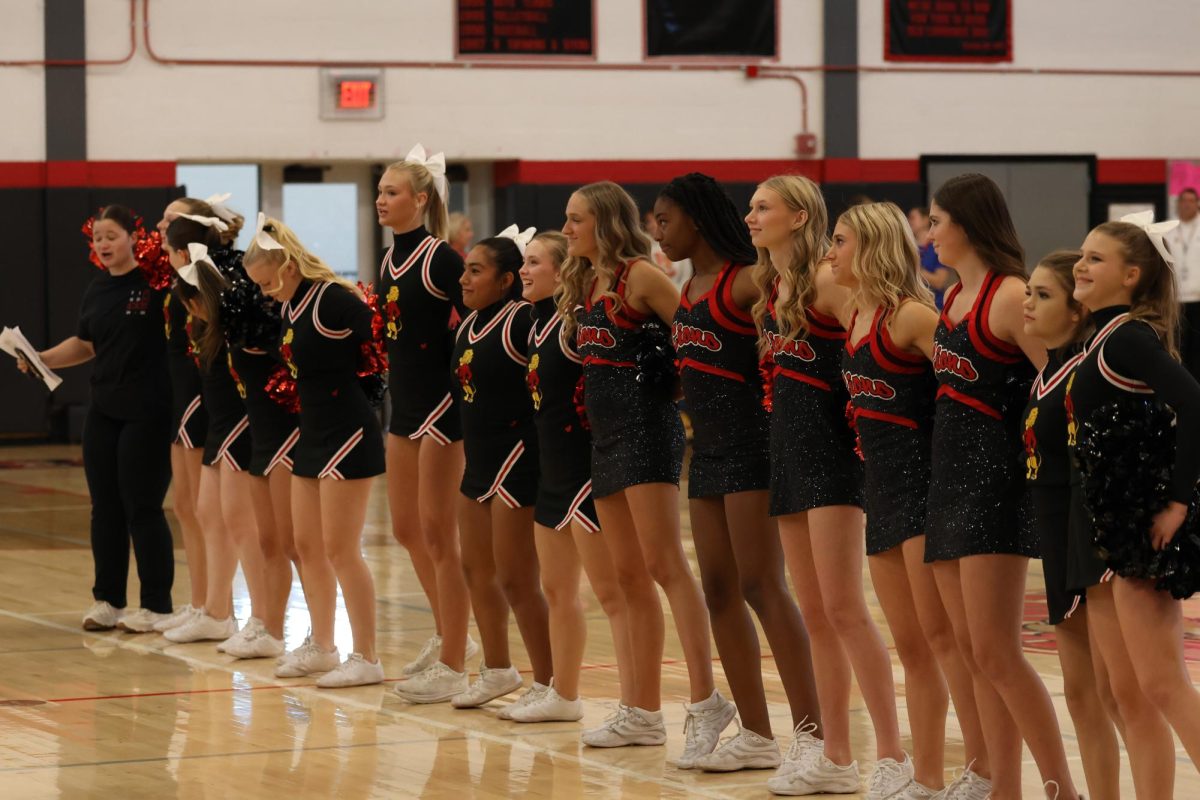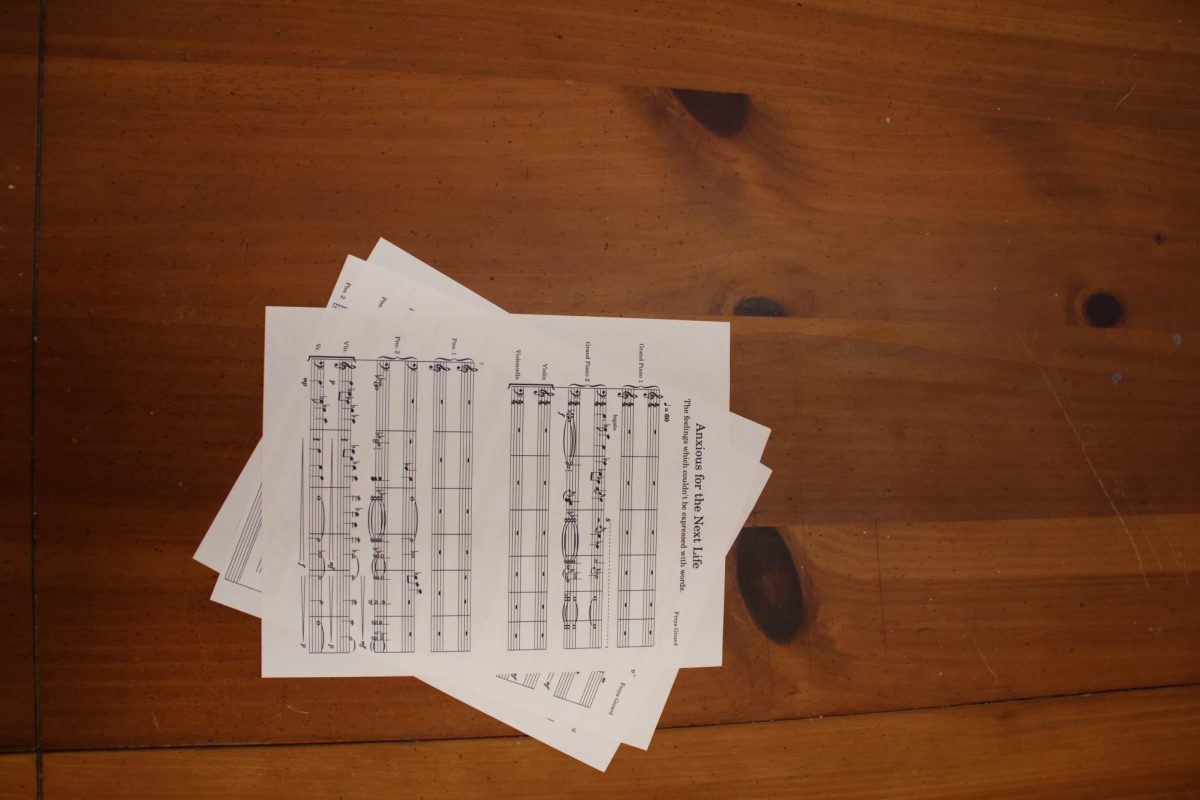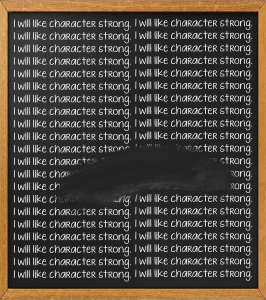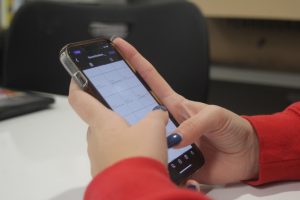COVID surge requires adapting
Omicron surge led teachers and student to adapt to absences
During student worktime, English teacher Emily Bjorlin completes tasks at her desk. With COVID cases surging, Bjorlin said she had to adjust her plans. “Even if it’s slowing me down, I’m not stressing out about it because I am of the belief that students can’t learn if they aren’t doing well as people.”
March 30, 2022
At the peak of the Omicron surge, 26.7% of students were missing from the halls of Lawrence High on Jan. 20.
As sick students relocated to their homes, an entire year of online school helped prepare both students and teachers for the issues that can arise from being absent.
For junior Ayden Ammann, teachers supplied him with the strategies he needed to keep up with deadlines.
“Some teachers reached out and helped me figure out what I missed which definitely helped alleviate my stress,” Ammann said. “When I got back, they laid out everything I missed that would be hard to recover from.”
He also found some specialized strategies that worked to keep him on track.
“Something that worked for me was separating all my work and doing like 30 minutes of one subject then went and did something else to let my brain refresh and then would move to another subject,” Ammann said. “It was pretty helpful.”
He left the experience wishing that some teachers had done a bit more to help him in some areas.
“I wish that every class gave me a bit of a schedule and most of them did but the ones that didn’t when I got back I felt really behind and it was hard to figure it out,” Ammann said.
Junior Will Leuschen took the initiative to get in contact with his teachers to stay on top of things.
“I contacted my teachers the day I tested positive and they replied quickly saying it’s all good and gave me the work I will be missing,” Leuschen said. “All my teachers said they are happy to meet with me when I come back and further explain the content, which is a stress-reliever.”
For him, this strategy worked best to stay up to date with any assignments he may need to get completed.
“I just check in with them each day to see what I missed and what notes I can get off them,” Leuschen said. “When you’re in quarantine, it’s more up to you to check in with your teachers and see what you missed and get that work.”
He attributes his success to being proactive early on.
“I have done a pretty good job on staying on top of my work and getting in touch with my teachers,” Leuschen said. “If you make the effort to reach out to your teachers they will be more helpful throughout the time you are gone.”
Students aren’t the only ones who have been affected by the absences.
English teacher Emily Bjorlin has had to take steps to get everyone on the same page.
“I’m pretty good at putting stuff on Google Classroom and making sure everyone knows how to contact me so it hasn’t been a terrible strain but I just kind of feel bad because I know that my class isn’t the only one,” Bjorlin said, “I’ve had great communication from all my students when they’ve been out which is unexpected and delightful.”
She has noticed a surprising amount of accountability coming from the majority of her classes.
“I’m very impressed with how my students have been handling it when they’ve been missing,” Bjorlin said. “I would say that my rate of missing and late work has barely changed and I’m very lenient about it because I’m not expecting you to get things in perfectly on time when you’re not feeling good.”
For her, the biggest thing is putting a focus on mental health and active communication with her students
“I want to spend more time checking in on them as people and putting less stress on having to get through this amount of content because the content isn’t all that matters,” Bjorlin said, “Just because this person is sitting in my room I don’t know who in their life has COVID-19 right now. Making sure that as people they are doing okay is the top priority.”



